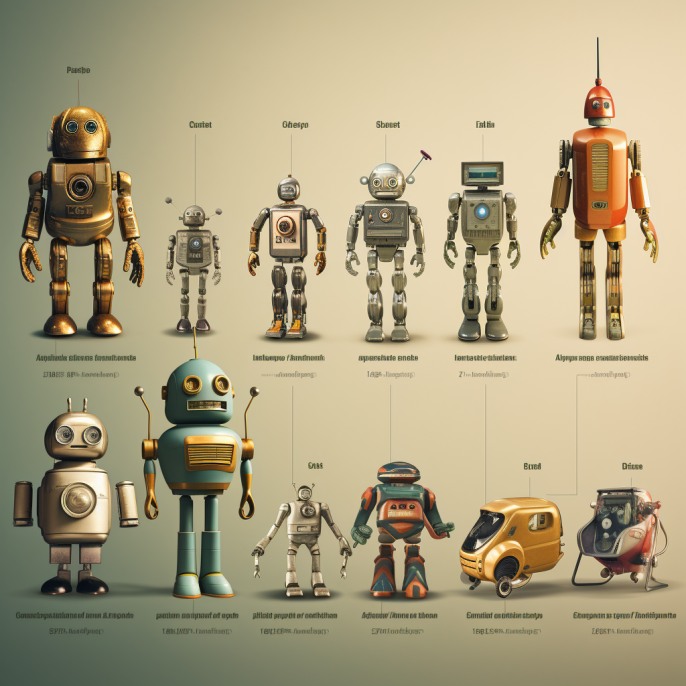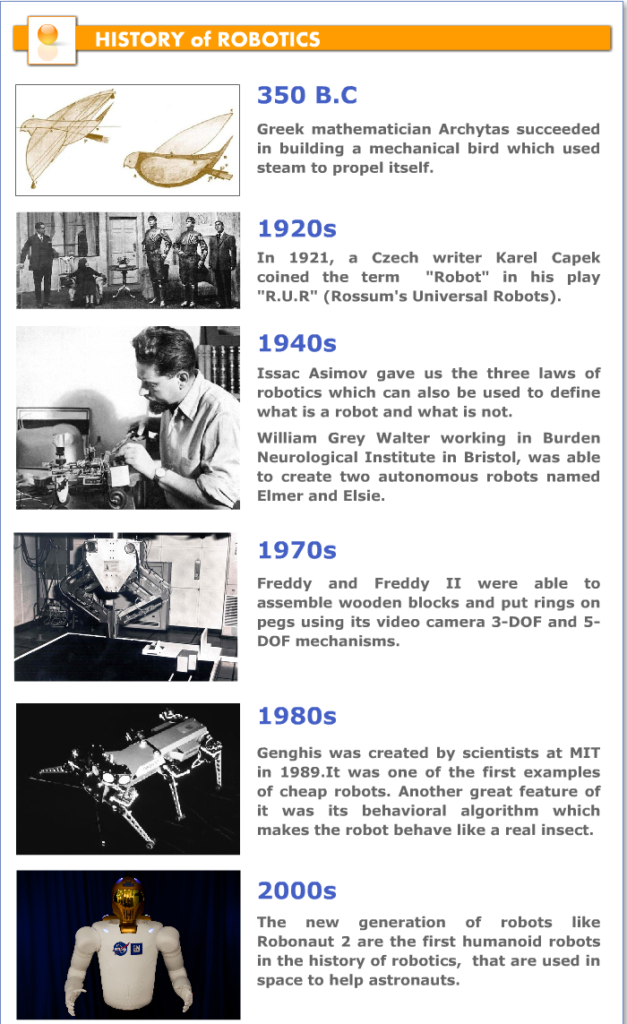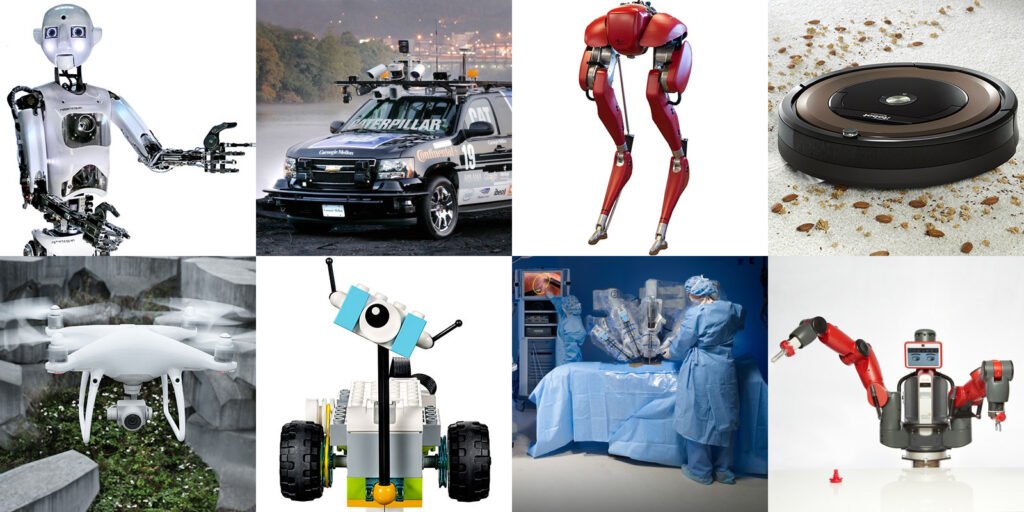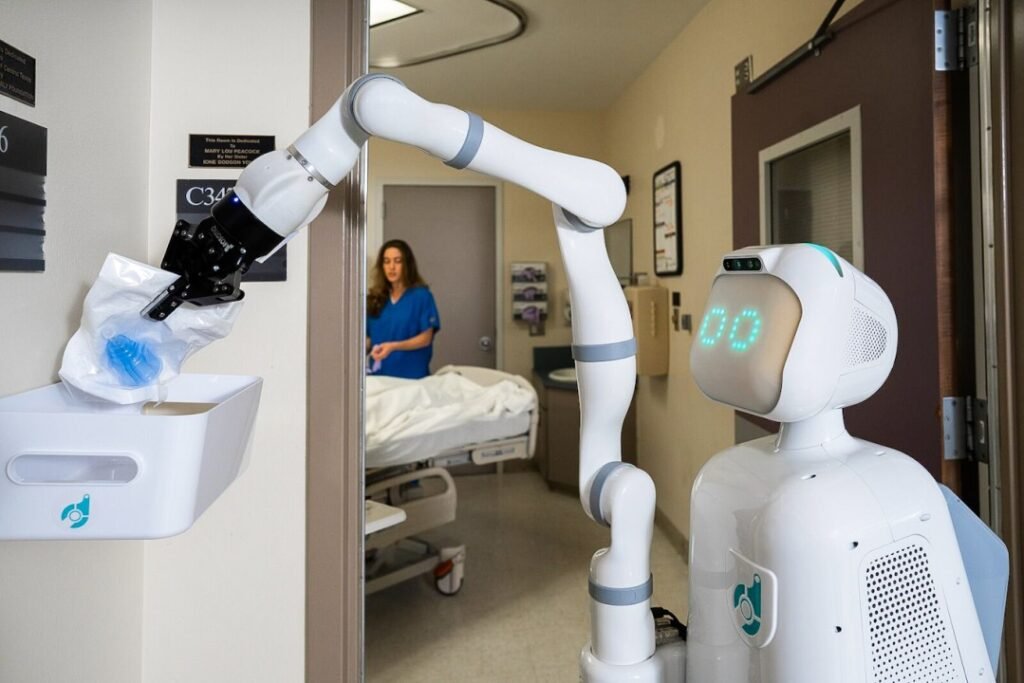A history of where robots came from

What is a robot?
A machine capable of carrying out a complex series of actions automatically, especially one programmable by a computer.
Today, Robots have various real-world applications and can do many things faster, more efficiently, more accurately, and more consistently than humans.
The history of robots
The evolution of modern robotics began in 1943 when science fiction author, Isaac Azimov stated three laws on how a robot must behave. The laws are as followed.
Must not injure a human through physical interaction or allowing a human to be harmed.
Must obey all commands set by a human, unless this collides with the first law.
Must protect their own survival, as long as this does not conflict with both the first and second law.

Types of Robots
Robots are versatile machines, evidenced by their wide variety of forms and functions. Here’s a list of a few kinds of robots we see today:
- Healthcare: Robots in the healthcare industry do everything from assisting in surgery to physical therapy to help people walk to moving through hospitals and delivering essential supplies such as meds or linens. Healthcare robots have even contributed to the ongoing fight against the pandemic, filling and sealing testing swabs and producing respirators.
- Homelife: You need look no further than a Roomba to find a robot in someone’s house. But they do more now than vacuuming floors; home-based robots can mow lawns or augment tools like Alexa.
- Manufacturing: The field of manufacturing was the first to adopt robots, such as the automobile assembly line machines we previously mentioned. Industrial robots handle a various tasks like arc welding, material handling, steel cutting, and food packaging.
- Logistics: Everybody wants their online orders delivered on time, if not sooner. So companies employ robots to stack warehouse shelves, retrieve goods, and even conduct short-range deliveries.
- Space Exploration: Mars explorers such as Sojourner and Perseverance are robots. The Hubble telescope is classified as a robot, as are deep space probes like Voyager and Cassini.
- Military: Robots handle dangerous tasks, and it doesn’t get any more difficult than modern warfare. Consequently, the military enjoys a diverse selection of robots equipped to address many of the riskier jobs associated with war. For example, there’s the Centaur, an explosive detection/disposal robot that looks for mines and IEDs, the MUTT, which follows soldiers around and totes their gear, and SAFFiR, which fights fires that break out on naval vessels.
- Entertainment: We already have toy robots, robot statues, and robot restaurants. As robots become more sophisticated, expect their entertainment value to rise accordingly.

What automation really means for jobs and productivity
The robotics revolution is rapidly accelerating, as fast-paced technological advances in automation, engineering, energy storage, artificial intelligence and machine learning converge. The far-reaching results will transform the capabilities of robots and their ability to take over tasks once carried out by humans.
Already, the number of robots in use worldwide multiplied three-fold over the past two decades, to 2.25 million. Trends suggest the global stock of robots will multiply even faster in the next 20 years, reaching as many as 20 million by 2030, with 14 million in China alone. The implications are immense, and the emerging challenges for policy-makers are equally daunting in scale.
The rise of the robots will boost productivity and economic growth. And it will lead to the creation of new jobs in yet-to-exist industries. But existing business models in many sectors will be seriously disrupted and millions of existing jobs will be lost. We estimate up to 20 million manufacturing jobs are set to be lost to robots by 2030.

